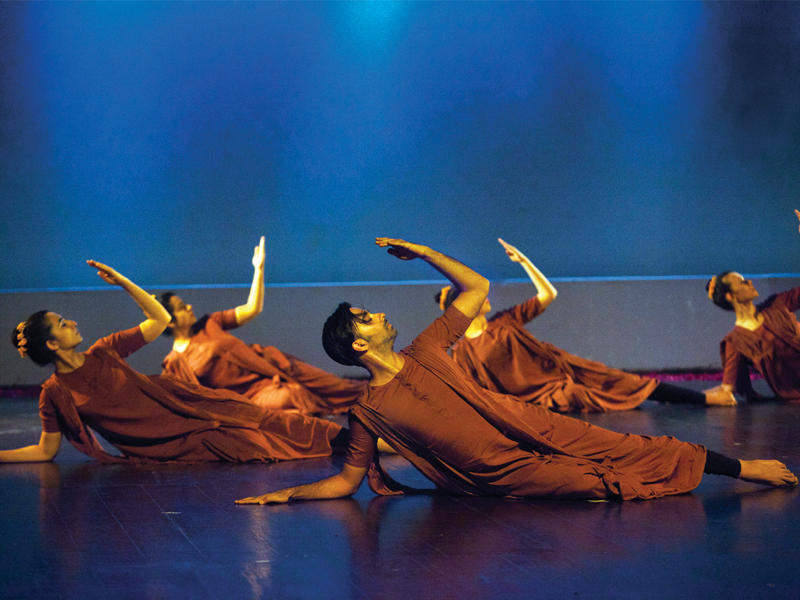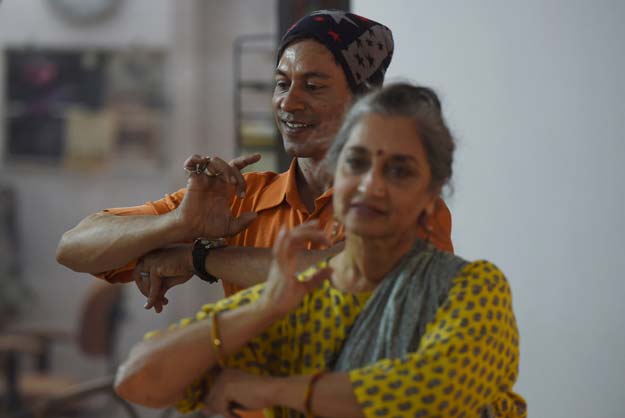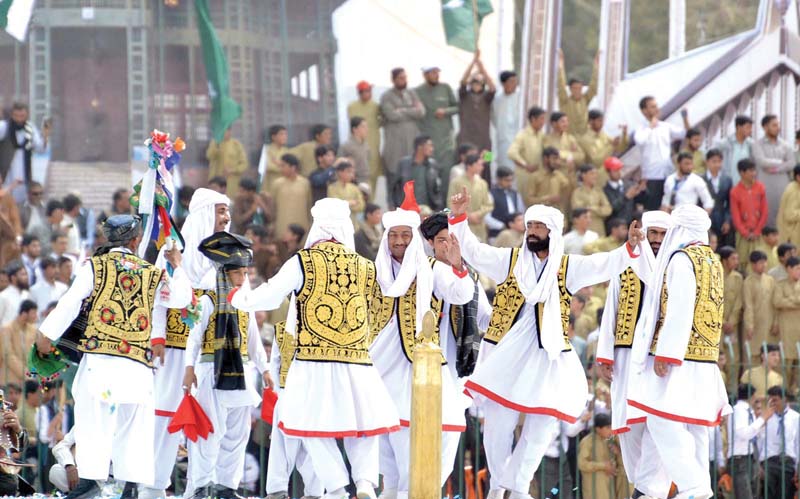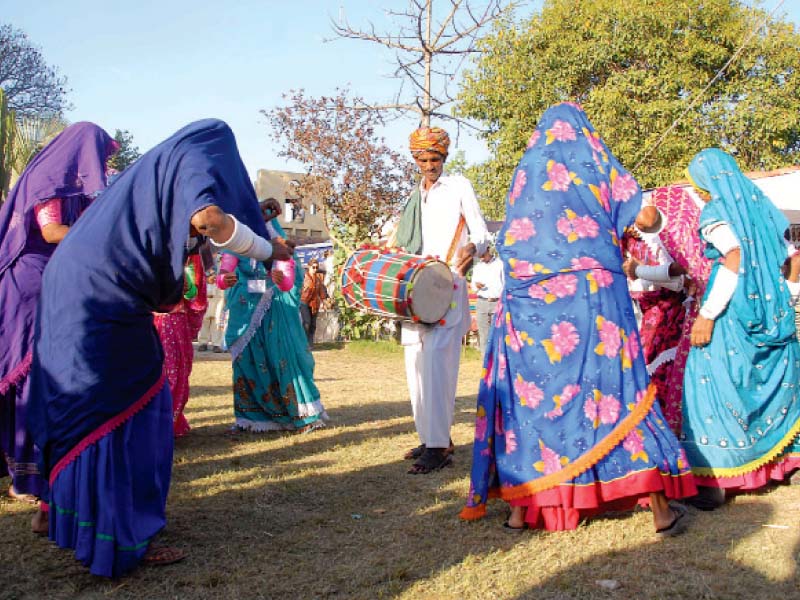It is unlikely more than a few among Pakistan’s Generation Z, or millennials for that matter, know of Naheed Siddique. But to an older generation, who remember her from the height of her popularity in the 1970s, the Kathak dancer – whose impressive resume includes introducing the art in to the dance curriculum of UK’s University of Surrey – is no less than a household name.
Siddique has had students across the globe from different backgrounds. But despite winning several accolades at home and abroad, including Pakistan’s Pride of Performance, her professional life these days is shockingly lacklustre.
Prominent expert on cultural affairs Professor Salima Hashmi while narrating her life story said that she was exiled during the military regime of Ziaul Haque and spent almost 12 years in London. “And she is leading a miserable life now.” This, no doubt, is a hard case, which in essence describe Pakistani society’s attitude towards cultural and creative industries.
Similar cases are not uncommon in Pakistan. For instance, veteran sarangi player Faqeer Hussain, who is now 89 years old, once contributed his talent to numerous national songs and is also as a member of PIA cultural troupe. However, his entire life is full of sorrowful stories mainly due to his economic conditions. “Bearing daily expenses was a real problem in my life. Let alone arranging marriages for my siblings, paying for their education and health expenses,” he said.

These are not isolated stories of two legends, rather the fate of hundreds of thousands other people linked to cultural and creative industries - a widely misperceived and misunderstood area in Pakistan.
As opposed to the general misperception in Pakistan, the cultural and creative industries – a business worth thousands of billions US dollars globally – is not concerned alone with art or music. It envisages several economically significant areas including handicrafts, creative arts, media, publications, digital culture and others.
Numerous reports have long explained how they can serve a nation’s strategic aims around the world. Take for instance the US Central Intelligence Agency’s clandestine Operation Long Leash in the late 40s. The operation was aimed at funding Abstract Expressionist art as a means for Western culture to ‘undermine’ the ‘rigid and conformist’ ideals of the Soviet Union. These days, culture industries are understood to play a major role in deterring violence and terrorism, and helping the cause of social justice around the world.
According to prominent defence analyst Lt-Gen (retd) Talat Masood, cultural and related industries were never taken seriously on a strategic level.

In this photograph taken on February 17, 2016 Pakistani classical dancer Sheema Kirmani (R) instructs a student in a studio at her home in Karachi. PHOTO: AFP
While mentioning consequences of the policy at the government level, Salima Hashmi said that it was ignoring cultural aspect that finally led to economic issues and separation of East Pakistan.
Pakistan has been witnessing violence, sectarianism and terrorism - all alien to its local cultures and history however, all of these have managed to infiltrate into the society because of several factors but on top of the list of reasons is less attention given to culture and its power for job creation.
Though no specific up- to-date data is available in this regard, a report of the UNESCO Institute of Statistics states that the total exports of cultural goods from Pakistan stood at only $437 million (approximately Rs 67 billion) in 2013-14 and in 2004 the total volume of such exports was mere $60 million. No doubt its business volume in the country has increased yet when compared with other countries in the region and beyond, such revenue generation and job creation is discouraging for obvious reasons.
According to the latest UNESCO report, the Cultural and Creative Industry (CCI) revenues worldwide exceed those of telecom services, which are US$1,570billion globally and surpass India’s GDP of US$1,900 billion. Within the total, the top three earners are television with US$477 billion, visual arts with US$391 billion, and newspapers and magazines with US$354 billion. With 29.5 million jobs (most employees in the sector are aged between 15-29 years), CCI employs 1% of the world’s active population. The top three employers are visual arts with 6.73 million jobs, books with 3.67 million jobs and music with 3.98 million jobs.
Participants says languages, minorities’ needs must be prioritised. PHOTO: EXPRESS
The report also sheds light on the regional revenues, Asia-Pacific accounts for US$743billion in revenue (33% of global CCI sales) and 12.7million jobs (43% of CCI jobs worldwide). The Asian market is driven by a large population, and the region is home to CCI leaders such as Tencent, China Central Television and Yomiuri Shimbun. Europe and North America are the second and third largest CCI markets. Today Latin America, and Africa including the Middle East rank fourth and fifth, respectively — but CCI players see great development opportunities in these two regions. Though symbiotic, each world region is developing a momentum of its own.
A report by the British Council mentions that about 15 per cent of Pakistanis are employed in CCI-related sectors, both in the formal and informal market. This means that only a few thousand jobs could be created. India, on the other hand, was able to create 1.1 million jobs in intellectual property-related businesses, which is only one segment of the CCI.
It is enough for gauging the official’s attitude toward culture and creative industries that when this scribe began researching, it was astonishing to learn that no government data was available on the sector. Even the spokesperson for the Ministry of Commerce Ayesha Humaira was not ready to comment on the issue and referred the matter to another department - all grave indicators for how little is known or being done for this sector.
Even several evidences show the area have been being ignored for long, the first report for formulating a policy on the arts and culture was presented in 1968 to the Standing Committee on Art and Culture, which is sometimes known as Faiz Report (after the poet, Faiz Ahmad Faiz) but it was set aside till the 1970s.
According to Salima Hashmi, also happens to be the daughter of Faiz Ahmad Faiz, that report was later approved by the Bhutto government but only partially implemented.”
Pakistan still has no comprehensive policy to optimise the CCI sector. According to sources at the National Institute of Folk and Traditional Heritage, while the institute is trying to restructure itself and introduce reforms on a policy level, there are challenges on several fronts that are not allowing them to achieve their objective.
These and several other factors explain as why Pakistan's shares in the market are much lower than what it can contribute. Some experts have speculated that Pakistan’s potential for earning revenue from CCI is much greater than its existing status. If corrective steps are taken, it could generate $ 1.5 billion in the near future. Pakistan could potentially earn billions of dollars in exports and imports, and generate millions of jobs in the sector.

Dancers perform at the opening ceremony of Balochistan Sports Festival at Ayub Stadium, Quetta. PHOTO: INP
National Officer (culture) at UNESCO Javad Aziz says that in Pakistan’s cultural and creative industries do have the potential for tourism, housing societies, historical sites like Ghandhara (among others) and many other segments. “The potential of Pakistan’s culture and creatice industries is much deeper if explored and it can generate revenue in billions of dollars,” says Aziz.
According to him, one Bollywood film alone based on a historical concept and utilising a single Indian historical site is able to generate handsome revenue for the industry. Analysts say that if properly drafted with inputs from experts, a cultural policy and CCI can also resolve issue of youth employment that could be satisfying for implementing the prime minister’s vision of employment.
“The cultural aspect signifies issues from environment to education, from economy to identity and nationality, security, peace and so on, if it is dealt strategically and a careful policy was drafted, it can resolve a number of issues in Pakistan,” said Executive Director Lok Virsa Talha Kushvaha. “CCI is definitely related mainly to culture that can have an immediate effect on the economy and the jobs sector.”
Pakistan, has so far not yet ratified UNESCO’s 2005 Convention on the Protection and Promotion of the Diversity of Cultural Expression.
According to Javad Aziz, the UNESCO has been working with National Heritage and Cultural Division since 2016 and has organised a number of awareness raising workshops and consultations with relevant provincial and federal departments, academic institutions, local NGOs and creative entrepreneurs on the promotion of cultural and creative industries, and the benefits of the ratifying and implementing the UNESCO 2005 convention.
“The national heritage and culture division is leading the process and getting feedback from relevant departments before submitting the case to the cabinet for ratification,” said Aziz.
Women perform a traditional Sindhi dance at the Lok Mela. PHOTO: EXPRESS
When asked for his official version, Deputy Secretary at National Heritage and Cultural Division Nazeer Ahmad said that work on issues related to the convention is in progress. “So far we have taken views of all the stakeholders and certain ministries and have forwarded it to the ministry of foreign affairs,” he said.
Though provincial governments have greater role in creating culture-based employment, they are also doing little to implement a detailed policy on the matter.
Though Khyber Pakhtunkhwa’s government has exceptionally approved a cultural policy in the near past but its implementation is a new dilemma.
Similarly, the government of Punjab launched a support programme for artists, which provides them with minimum support through a cash stipend.
So far, according to data shared by Deputy Secretary at the Planning and Cultural Division of Punjab Naveed, the beneficiaries of this programme are 1,918 people in the current year. Yet all these steps are no insufficient to exploit CCI in the national interest.
Significant circles in Pakistan some time openly and at the other time secretly complain about cultural onslaught in the globalised world and sometimes cultural imports from the neighboring rivals. But it is surprising that no serious steps are being taken for addressing the issues at hand.
In a telephonic conversation with T Magazine, Federal Minister for National History and Literary Heritage Shafqat Mehmood, though declined to comment on strategic aspect of CCI, said, “Compared to the past, employment in this regard has increased and the government is taking care of the cultures as well as [taking] steps to promote Pakistani culture.
He also acceded that when compared with other regional countries, the CCI segment in Pakistan is lacking efficiency. "Though [Pakistan] is far behind compared to the regional countries or other countries in the world, but as compared to the past we have improved."


